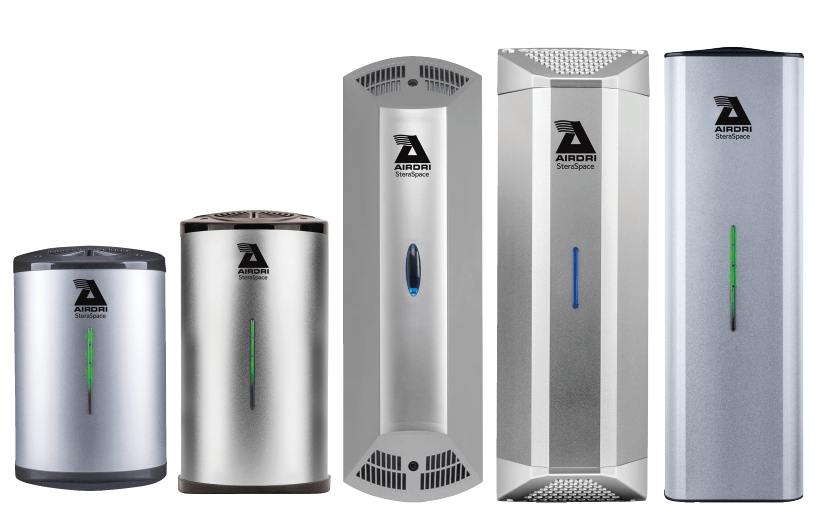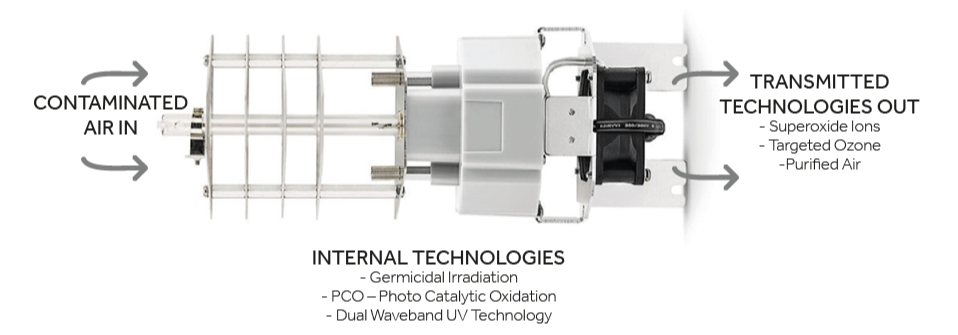Whilst we have become increasingly more savvy about outdoor air quality in the UK over the last 15 years, with targeted action by the government leading to the introduction of clean air zones in the worst affected urban areas years in a bid to protect public health and many people taking steps to do their bit to protect the environment by cutting down on non-essential journeys with hybrid working and co-worker lift share schemes, businesses need to be equally aware of the significance of indoor air quality and its impact on the wellbeing of their workforce.
Considering that the average Brit spends 90% of their time inside and most people spend around at least a third of every day at work, often in close proximity to their co-workers, indoor air quality should be at the forefront of every employer’s agenda, particularly in the winter months when levels of flu, covid variants and other respiratory illnesses, and therefore worker absenteeism, rise exponentially. The average workplace can be a hotbed for germs and bacteria, with hundreds of people potentially coming into contact with the same surfaces and breathing the same stagnant air every day.
And the spread of germs isn’t the only issue. Poor indoor air quality can also directly impact health in a myriad of ways from headaches to fatigue, eye and throat irritation, sinus congestion, dizziness, nausea and even decreased lung capacity and function. It can also play a negative role in cognitive performance, with lack of concentration and the inability to focus potentially having an adverse effect on employee productivity.
A whopping 94% of respondents in the 2023 Healthy Buildings survey by Honeywell were of the opinion that workplace air quality has a direct impact on their health and wellness, and nearly a quarter of UK office workers stated that they are extremely concerned about poor air quality at work. These results make it abundantly clear that employers have a duty to take staff concerns into consideration and to take steps to instil confidence in their workforce regarding the safety of the working environment. 80% of workers polled in the survey also stated that their expectations in this area have increased since the pandemic.
Professor Chris Whitty, England’s Chief Medical Officer, recently stressed in his annual report that, although outdoor air pollution has significantly reduced since the 1980s, tackling indoor air pollution should now also be a priority, with levels of indoor air pollutants being regularly monitored in offices and public buildings and calling for a ‘roadmap to cleaner indoor air’.
What can be done to combat poor workplace air quality?
The World Health Organisation (WHO) recommends opening windows for natural ventilation, creating a flow of fresh air within the workplace and thus reducing the potential for airborne transmission of pollutants and viruses. This can often be impractical however due to weather, air temperature and noise considerations, and is also heavily dependent on the outdoor air quality.
Indoor air quality sensors can be installed to give real-time insight into air quality issues within the workplace, continually monitoring pollutants in the environment such as carbon monoxide, carbon dioxide, particulate matter, volatile organic compounds, humidity, and radon.
Ensuring that the workplace is kept clean and germ free with consistently robust cleaning is a must, particularly in areas used by multiple people on a daily basis. Studies have shown that chemical cleaning products can contribute to indoor air pollution, so switching to greener cleaners made from natural enzymes rather than toxic or allergenic ingredients and with reduced bleach content can have health as well as ecological benefits.
Portable air cleaners with high efficiency particulate air (HEPA) filtration have been suggested as a solution for indoor air quality. Where this technology can significantly increase the clean air supply, all the air in the room must pass through the filter for it to be purified; some viruses are so small they flow straight through the filters and escape back into the air.
An alternative and more effective solution is an air sanitisation system like our SteraSpace units, which effectively remove viruses, bacteria, mould, fungi and odours by combining three technologies to emit a stream of disinfecting plasma into the air. SteraSpace has been tested at Porton Down and is proven to kill 98.11% of airborne and 99.6% of surface micro-organisms and by the Health Protection Agency where the efficacy results showed that within five minutes, 96-98% of airborne viruses were eliminated. When used in an office environment and independently tested, the units were found to reduce bacteria and pathogens by 78% after only two weeks in operation.

How does SteraSpace work?
SteraSpace combines Photo Catalytic Oxidation (PCO) and Germicidal Irradiation with Dual Waveband UV technology making it the most advanced virus and bacteria control technology of its kind, eradicating bacteria, mould, fungi, viruses, dust mites, allergens, and harmful VOCs to result in clean, healthy air and surfaces.
The advanced technology releases a continuous flow of disinfecting plasma of targeted ozone, superoxide ions and hydroxyl radicals into the air, eliminating 98.11% of airborne and 99.6% of surface micro-organisms in under 60 minutes. The SteraSpace range is suitable for all workplace environments, from washrooms to offices, medical practices, schools, warehouses, factories and care homes and able to service areas up to 80m2. An air sanitisation unit starts at around £250, depending on the size of the room and after the initial installation, costs in the region of just £2 per month to run with an annual outlay of around £50 for a new bulb.

What are the benefits of SteraSpace technology?
- Can help to reduce staff absenteeism and agency costs
- Improves environment for workforce, visitors, and clients
- Effectively removes viruses, bacteria, mould, fungi & odours
- Creates a hostile environment to prevent growth of mould and fungi
- Cleans deep into fabrics, prolongs life of carpets and soft furnishings
- Eliminates need for masking agents
The SteraSpace range of products provide 24/7/365 protection in any indoor area including eating areas, toilets, sluice rooms, communal and reception areas and we’re extremely proud of both the effectiveness of the product and also how the technology can be used in alternative ways for niche or more demanding spaces. An added benefit is the elimination of unpleasant odours from shared spaces like kitchens, changing rooms and waste disposal areas.
Unlike other routes to infection control, such as chemical fogging, SteraSpace can be used continuously in the background creating cleaner, fresher air throughout the day. Once installed it is extremely affordable with very low energy consumption. It really is one of the best ways that businesses can ensure the safety and assurance of their workforce.
In conclusion, businesses need to consider employee health and wellness as a priority and improving indoor air quality constitutes a significant step towards transforming wellbeing in the workplace, creating a safe and productive working environment by offering high quality indoor air.


